From Text to Trait: An AI Tool for Identifying Intellectual Humility
My B.Tech thesis developing an LLM-based tool to analyze narratives for complex psychological traits, grounded in the philosophical wisdom of the Upanishads.

1. The Research Challenge: Bridging Ancient Wisdom and Modern AI
Intellectual Humility (IH) is a complex psychological virtue. While modern frameworks exist, there's a significant gap in applying AI to analyze IH traits derived from ancient Indian wisdom. My research, conducted at the Centre of Excellence for Indian Knowledge Systems (CoE-IKS), aimed to bridge this gap. The goal was to build an LLM-based tool capable of identifying 30 distinct IH traits based on the foundational framework developed by Dr. Jayashree Gajjam (2024).

2. Methodology: From Zero-Shot Failure to Few-Shot Success
My initial approach using zero-shot learning with Google Gemini Pro was unsuccessful. The model identified generic positive traits but consistently failed to capture the specific, nuanced definitions required by the Upanishadic IH framework.
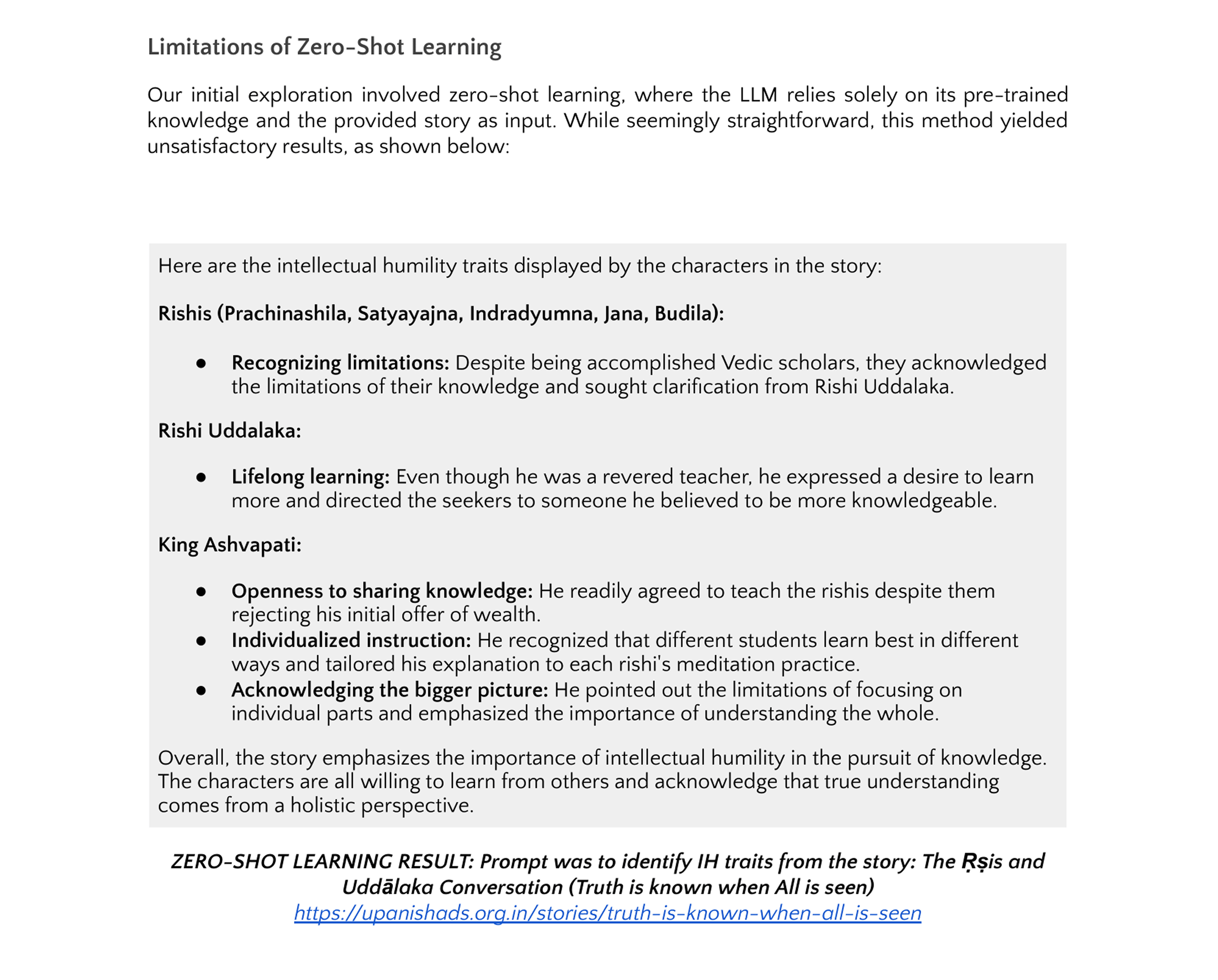
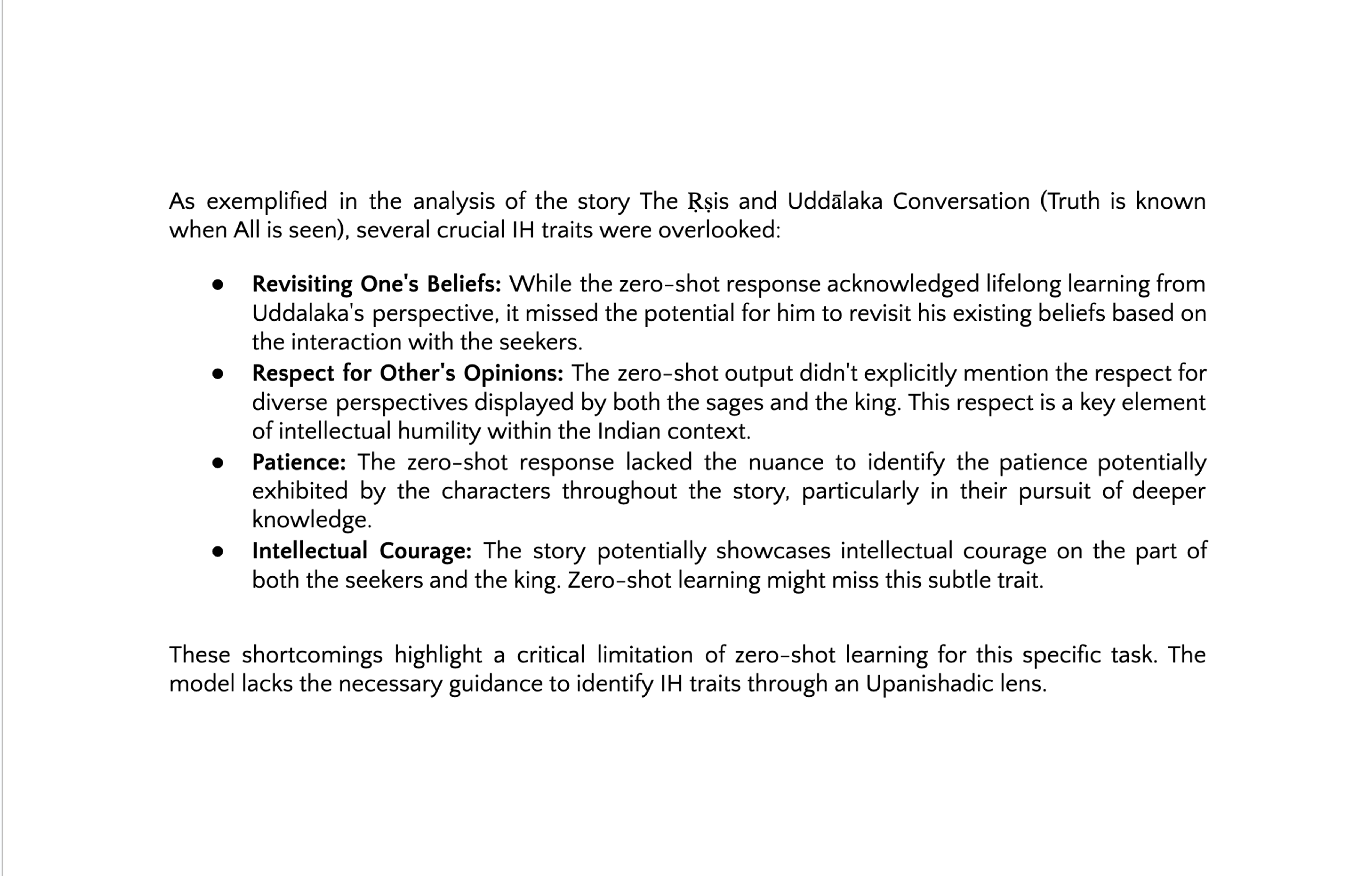
The carousel shows the initial generic output and an analysis of the key traits it missed.
This critical failure led me to pivot to a few-shot learning strategy. I meticulously curated a small, high-quality dataset of 12 annotated Upanishadic stories. By providing the LLM with these examples within a highly engineered prompt, I was able to effectively guide it to understand and apply the specific IH framework, leading to far more accurate and relevant analysis.
3. The Outcome: A Deployed & Validated Tool
The final result is a functional, publicly accessible tool deployed on Hugging Face Spaces using Streamlit. It can analyze any story for Intellectual Humility traits and provides a "chain-of-thought" explanation for each identified trait, making the AI's reasoning transparent.
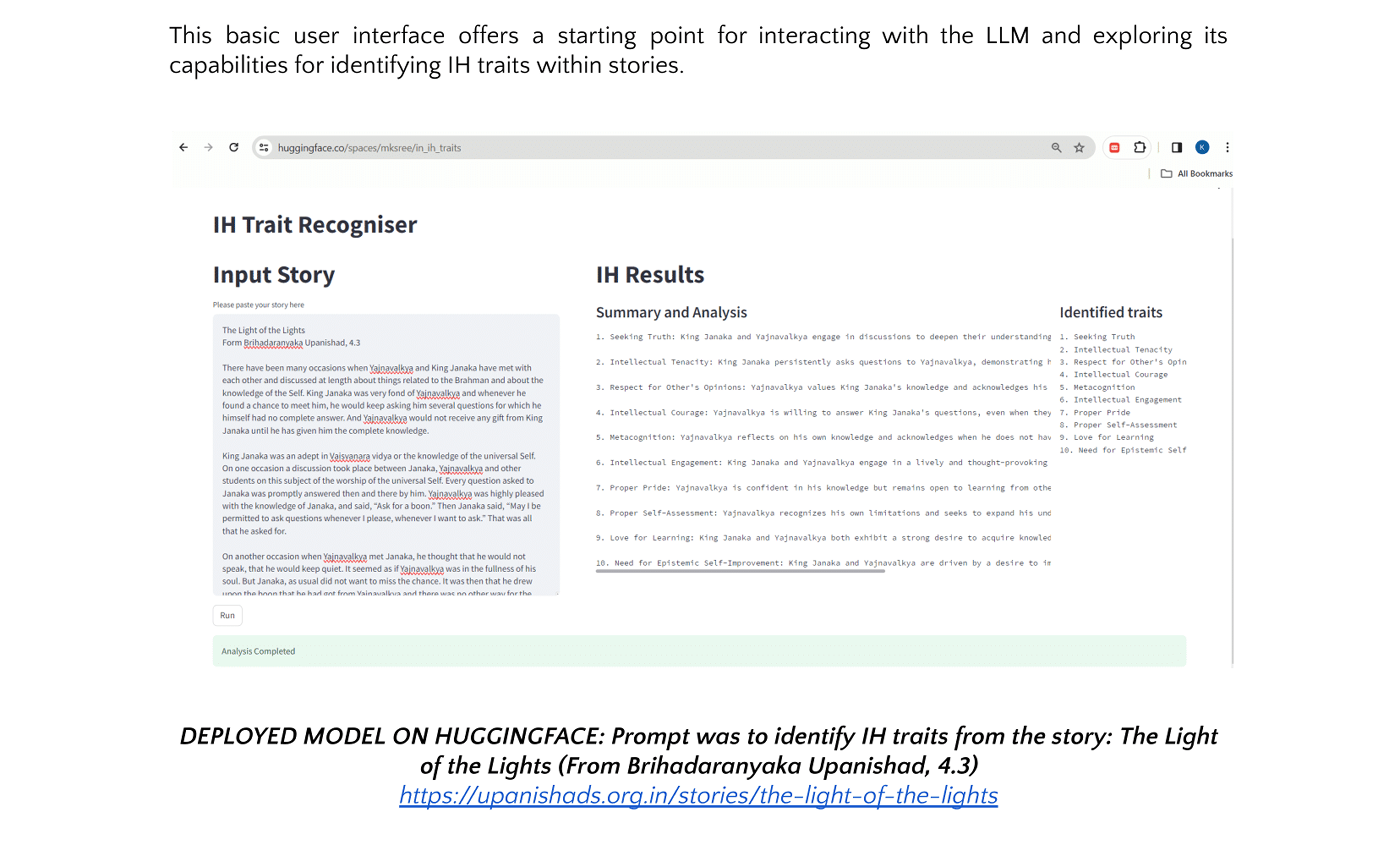
Validation on Unseen & Cross-Lingual Texts
To validate the model's robustness, I tested it on diverse, unseen narratives. The tool successfully identified relevant IH traits in a biographical story about Dr. A.P.J. Abdul Kalam and, more surprisingly, was able to analyze a poem in Telugu—a language it was not trained on—and provide a correct analysis in English.
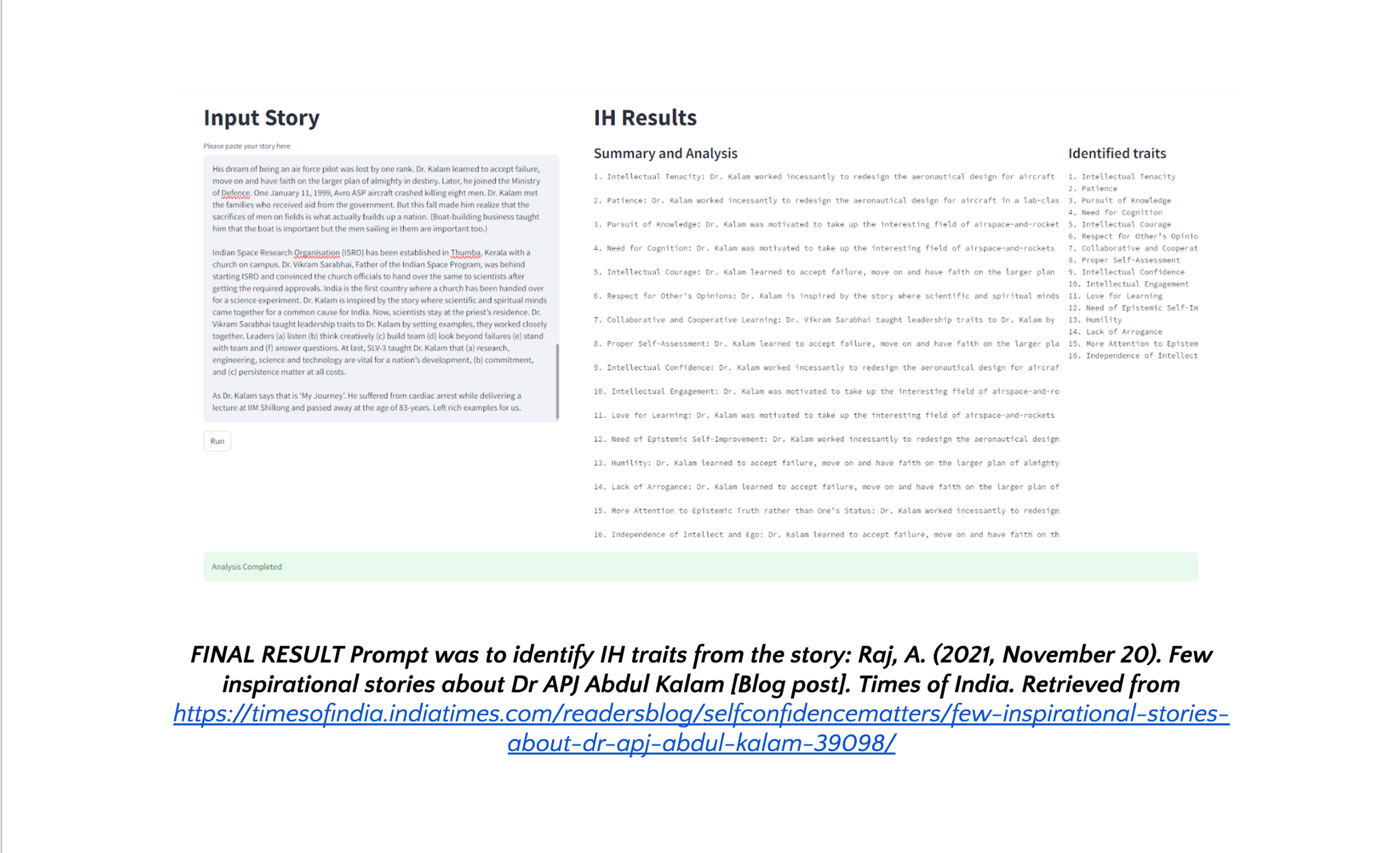
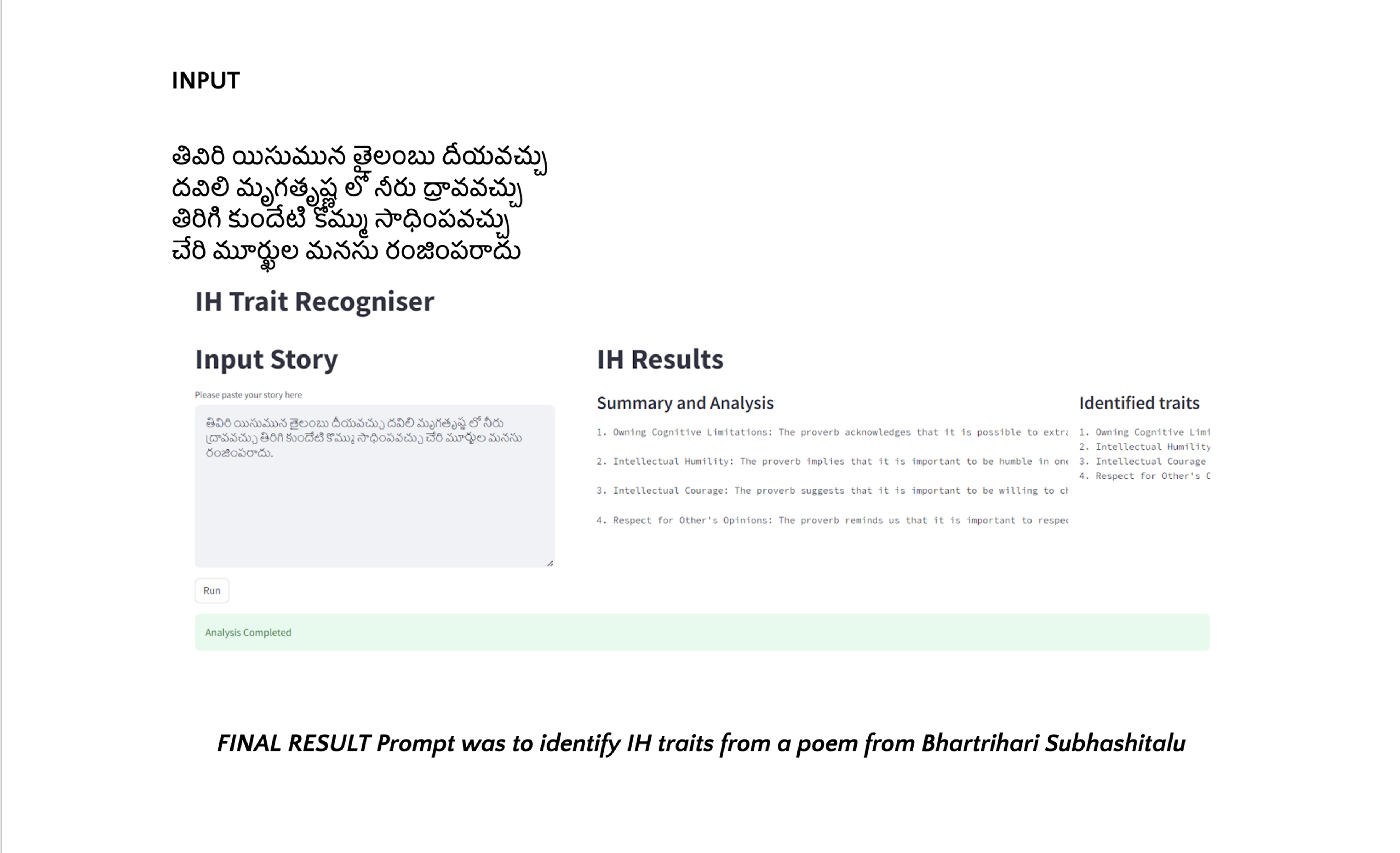
Key References
This work stands on the shoulders of existing research. The following were central to the project's foundation:
- Gajjam, Jayashree Aanand. “The Upaniṣadic Way of Intellectual Humility.” Brahmavidya, The Adyar Library Bulletin, vol. 88, 2024, pp. 127–192.
- Wei, Jason, et al. “Chain-of-thought prompting elicits reasoning in large language models.” Advances in neural information processing systems, vol. 35, 2022, pp. 24824-24837. [Link]
- WHITCOMB, DENNIS, et al. “Intellectual Humility: Owning Our Limitations.” Philosophy and Phenomenological Research, vol. 94, no. 3, 2017, pp. 509–39. [Link]